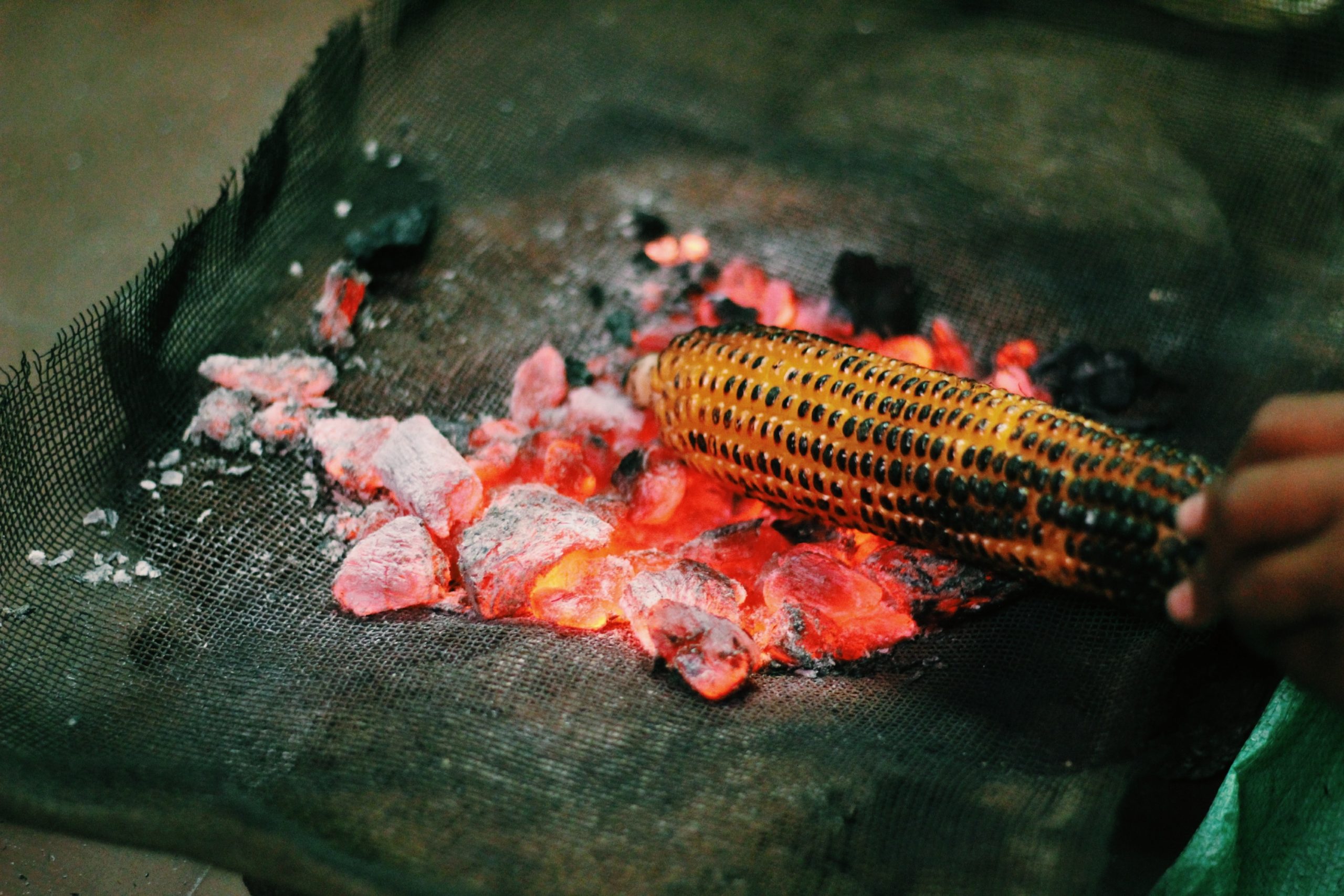
As the air turns crisp and the days grow shorter, there’s a magical transformation in the world of cuisine. Winter, with its chilly embrace, invites us to indulge in a comforting array of foods that warm both body and soul. The culinary landscape changes, offering a unique selection of dishes and ingredients tailored to ward off the cold and bring joy to our taste buds. In this article, we will discuss foods for winter.
In this exploration of winter foods, we embark on a journey through a season defined by hearty and soul-soothing fare. From steaming bowls of rich soups to slow-cooked stews, from the earthy flavors of root vegetables to the sweet delights of winter fruits, this season has something special to offer every palate.
Join us as we delve into the world of foods for winter, uncovering the cozy, comforting, and downright delicious dishes that define this time of year. Whether you’re seeking warmth on a frosty evening or simply eager to savor the flavors of the season, our culinary guide will inspire you to embrace winter’s bounty with open arms and an eager appetite.

Foods for winter
Table of Contents
Embracing the Cold Season: A Culinary Journey
Exploring the cultural significance of winter foods in various regions
In this culinary expedition, we embark on a journey through various regions, each offering a unique perspective on the cultural significance of winter foods. From the snow-covered landscapes of Scandinavia to the bustling markets of the Middle East and the festive tables of Latin America, we’ll delve into the heartwarming stories and flavors that define the winter culinary experience.
For many cultures, winter foods are more than just sustenance; they are a way to honor traditions, bring communities together, and celebrate the resilience of the human spirit in the face of the cold. Join us as we uncover the rich tapestry of culinary customs and the deep-rooted connections between food, culture, and the season of winter.
Throughout this exploration, we’ll discover how regional ingredients, cooking techniques, and family recipes play a pivotal role in preserving heritage and creating a sense of belonging. From the symbolism of certain dishes to the time-honored rituals associated with winter feasting, our journey will shed light on the fascinating cultural nuances that make winter foods an integral part of the world’s diverse culinary mosaic.
Highlighting how different cuisines adapt to colder climates
The world’s culinary landscape is as diverse as the climates in which it thrives. From the frosty tundras of Northern Europe to the snow-covered mountains of Asia and the chilly northern reaches of North America, each region’s cuisine has evolved to not only sustain its people but also bring comfort and joy during the long, cold months. These adaptations go beyond just surviving the winter; they celebrate it.
From the mastery of pickling and fermentation in Scandinavia to the spice-infused creations of Eastern Asia and the hearty comfort foods of Eastern Europe, we’ll uncover the secrets that make these cuisines thrive when the mercury drops.
The culinary adaptations to colder climates also tell a story of resilience, innovation, and the indomitable human spirit. In each region, you’ll find unique ingredients, flavors, and cooking techniques that not only satisfy the palate but also provide insight into the local culture, history, and way of life. So, bundle up and prepare to embark on a mouthwatering journey through the world’s winter kitchens. Discover the savory stews, aromatic spices, and time-honored traditions that keep people warm, nourished, and connected to their roots in the face of chilly challenges.
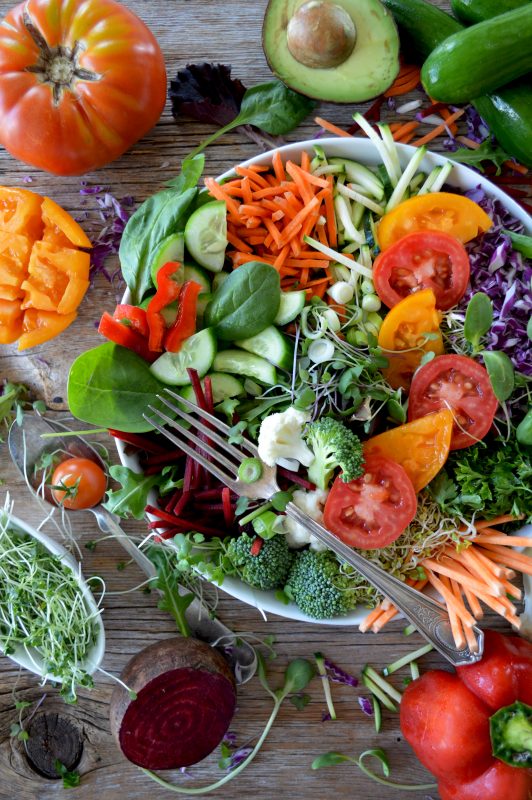
Veggies and fruits
Essential Nutrients for Winter Wellness
Maintaining immunity, energy levels, and overall health during winter is essential to combat the cold weather and potential illnesses. Several essential nutrients play a crucial role in achieving this. Here are some key nutrients and their sources:
- Vitamin C: This powerful antioxidant helps boost the immune system and can reduce the duration and severity of colds. Sources include citrus fruits (oranges, grapefruits), strawberries, kiwi, and bell peppers.
- Vitamin D: Often called the “sunshine vitamin,” it’s crucial for immune function. In winter, when sunlight exposure is limited, consider fortified foods like fortified dairy products, fatty fish (salmon, mackerel), or a vitamin D supplement (under medical guidance).
- Zinc: This mineral supports the immune system and helps reduce the severity of cold symptoms. Sources include lean meats, poultry, beans, nuts, and whole grains.
- Iron: Iron is vital for energy production and overall health. Good sources include lean meats, poultry, fish, beans, lentils, and fortified cereals.
- Omega-3 Fatty Acids: These healthy fats have anti-inflammatory properties and support overall health. Fatty fish (salmon, mackerel, sardines), flaxseeds, and walnuts are excellent sources.
- Protein: It’s essential for repairing and building tissues, including immune cells. Include lean meats, poultry, fish, dairy, eggs, and plant-based sources like beans, lentils, and tofu in your diet.
- Fiber: A high-fiber diet supports digestion and helps maintain steady energy levels. Whole grains, fruits, vegetables, legumes, and nuts are rich in fiber.
- Vitamin A: This vitamin is essential for immune function and overall health. Carrots, sweet potatoes, spinach, and kale are excellent sources of vitamin A.
- Probiotics: These beneficial bacteria promote gut health, which is closely linked to the immune system. Yogurt, kefir, sauerkraut, and other fermented foods are good sources.
- Water: Staying hydrated is crucial year-round. In winter, we tend to drink less water, but it’s essential for energy and overall health.
- Antioxidants: These help protect cells from damage caused by free radicals and support overall health. Berries, dark chocolate (in moderation), and various fruits and vegetables are rich in antioxidants.
- Vitamin E: Another antioxidant, vitamin E helps maintain a healthy immune system. Sources include nuts, seeds, and vegetable oils.
- Magnesium: It plays a role in energy production and muscle function. Foods like nuts, seeds, whole grains, and leafy greens are magnesium-rich.
- Selenium: This mineral supports the immune system. You can find it in Brazil nuts, fish, turkey, and whole grains.
Remember that a well-balanced diet that includes a variety of foods is the best way to ensure you’re getting these essential nutrients. It’s also a good idea to consult with a healthcare professional or registered dietitian to tailor your diet to your specific needs and ensure you’re meeting your nutritional goals during the winter months.
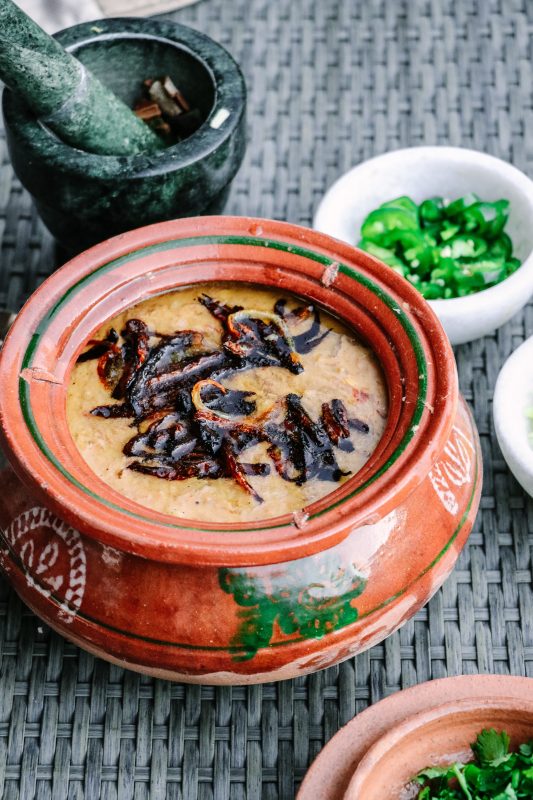
Spices for winter foods
The Magic of Warming Spices
Winter dishes often benefit from the addition of spices that not only provide warmth and depth of flavor but also offer potential health benefits, including boosting metabolism and aiding digestion. Let’s explore some of these spices and their properties:
- Cinnamon: Known for its sweet and warming flavor, cinnamon is a staple spice in many winter recipes. It can help regulate blood sugar levels, which can be particularly important during the holiday season. Cinnamon may also have anti-inflammatory properties and promote better digestion.
- Ginger: Ginger has a spicy and slightly sweet flavor that adds depth to both sweet and savory winter dishes. It’s well-known for its digestive benefits, helping to alleviate nausea, reduce inflammation, and improve digestion. Ginger may also boost metabolism and help with weight management.
- Nutmeg: Nutmeg has a warm and nutty flavor that pairs well with desserts, eggnog, and creamy soups. It may aid digestion and relieve gastrointestinal discomfort. Nutmeg is also a good source of minerals like calcium, magnesium, and potassium.
- Cloves: These aromatic buds have a strong, warm flavor. Cloves can help soothe digestive issues, reduce inflammation, and provide antioxidants that support overall health.
- Cardamom: Cardamom has a unique, slightly sweet, and citrusy flavor. It’s often used in both sweet and savory dishes, such as chai tea and curry. Cardamom may help with digestion, reduce bloating, and act as a natural diuretic.
- Turmeric: Although not traditionally associated with winter spices, turmeric has a warm, earthy flavor and offers powerful anti-inflammatory and antioxidant properties. It can aid digestion, boost metabolism, and support overall well-being. Turmeric is often used in savory dishes, such as curries and stews.
- Cayenne Pepper: This spicy spice contains capsaicin, which can boost metabolism and promote fat burning. A little goes a long way, so use it sparingly to add a kick to winter dishes like chili or hot chocolate.
- Black Pepper: While not as hot as cayenne, black pepper adds a warm and peppery flavor to dishes. It enhances the absorption of other nutrients and can support digestion.
- Star Anise: This star-shaped spice has a licorice-like flavor and is commonly used in mulled wines and Asian dishes. It may help alleviate digestive discomfort and provide antioxidants.
- Allspice: Allspice combines flavors reminiscent of cinnamon, cloves, and nutmeg. It’s versatile and can be used in a wide range of dishes, from soups to desserts. Allspice may support digestion and provide antioxidants.
When incorporating these spices into your winter dishes, start with small amounts and adjust to your taste. Remember that while spices can offer health benefits, they should be part of a balanced diet. Experiment with these warming spices to enhance the flavors of your winter recipes while potentially boosting your metabolism and aiding digestion.

Comfort food for winter
Classic Winter Comfort Foods
When the chilly winds of winter blow and the days grow shorter, there’s nothing quite like a comforting, hearty meal to lift your spirits and warm your soul. From rich and creamy to savory and indulgent, these dishes are guaranteed to bring warmth, satisfaction, and a sense of home to your table.
- Chicken Pot Pie: A flaky, golden crust envelops tender chunks of chicken, vegetables, and a creamy sauce. This classic comfort food warms your heart with every bite.
- Macaroni and Cheese: Silky, cheesy sauce draped over perfectly cooked pasta – it’s a simple yet irresistible combination that never fails to please.
- Chili: A steaming bowl of chili, filled with ground beef, beans, tomatoes, and spices, is the ultimate winter warmer. Top it with cheese, sour cream, and a sprinkle of green onions for extra comfort.
- Mashed Potatoes and Gravy: Creamy mashed potatoes smothered in rich, savory gravy create a comforting side dish that complements any main course.
- Beef Stew: Tender chunks of beef, root vegetables, and aromatic herbs simmered to perfection create a hearty and satisfying stew that’s perfect for a cold evening.
- Lasagna: Layers of pasta, ricotta cheese, mozzarella, and a robust tomato sauce come together in a dish that’s both comforting and incredibly flavorful.
- Chicken and Dumplings: Soft, fluffy dumplings floating in a hearty chicken broth make this dish a true comfort classic. It’s like a warm hug for your taste buds.
- Homemade Soup: Whether it’s creamy tomato, hearty vegetable, or chicken noodle, a bowl of homemade soup is the ultimate comfort food that warms you from the inside out.
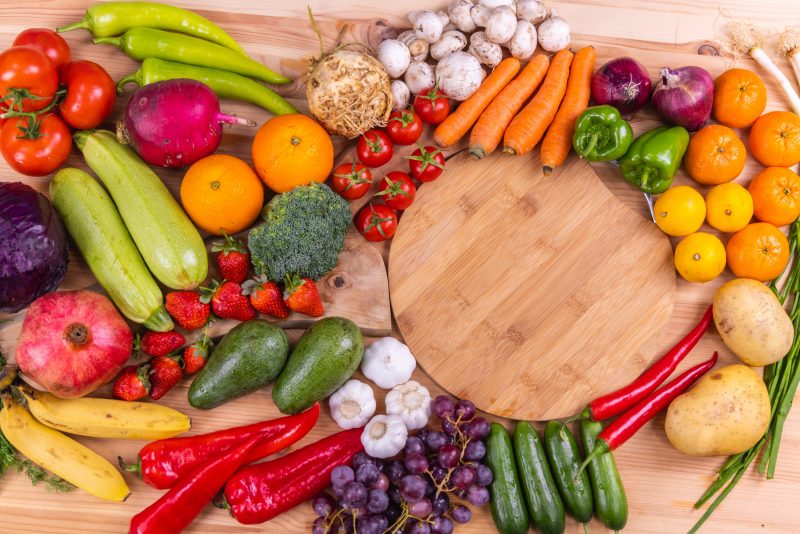
Fruits and vegetables
Seasonal Produce: Eating Local and Fresh
Winter can be a challenging season for growing fruits and vegetables, but several hardy options thrive in colder climates. These winter produce items not only add nutritional value to your diet but also bring seasonal flavors to your dishes.
Winter Fruits:
- Apples: Many apple varieties can withstand cold temperatures and even benefit from a period of winter chill, which helps improve their flavor and texture.
- Pears: Some pear varieties, such as Bartlett and Bosc, can be harvested in the late fall and stored for consumption throughout the winter months.
- Cranberries: These tart, red berries are typically harvested in the fall and can be stored in cold storage for use in various winter dishes and sauces.
- Citrus Fruits: While not native to colder climates, citrus fruits like oranges, grapefruits, and mandarins are in season during the winter months and are often available in grocery stores.
Winter Vegetables:
- Root Vegetables: Root vegetables like carrots, turnips, beets, and parsnips thrive in cooler temperatures and can be stored in the ground or a root cellar for extended periods.
- Brussels Sprouts: These small cabbage-like vegetables are often at their best after the first frost and can be harvested throughout the winter.
- Cabbage: Cabbage varieties such as green, red, and Savoy cabbage are well-suited to cold climates and can be used in various dishes like coleslaw and sauerkraut.
- Leeks: Leeks thrive in cold weather and can be used as a flavorful addition to soups and casseroles.
- Onions: Onions are a staple in many winter dishes and can be stored for several months if kept in a cool, dry place.
- Garlic: Garlic cloves planted in the fall can overwinter and produce fresh bulbs in the spring, but you can also use stored garlic throughout the winter for cooking.
- Winter Spinach: Certain spinach varieties are bred for cold tolerance and can be harvested throughout the winter in milder climates or undercover.
- Winter Herbs: Hardy herbs like rosemary, thyme, and sage can survive colder temperatures and continue to provide fresh flavors to your dishes.

Hot beverages
Hot Beverages for Chilly Days
When the cold winds blow and winter blankets the world in frost, there’s nothing quite like wrapping your hands around a steaming mug of your favorite hot beverage. From classic favorites to exotic concoctions, these hot beverages are a heartwarming celebration of winter comforts.
Whether you’re curled up with a good book, gathered with loved ones, or simply seeking solace from the cold, these hot drinks are a testament to the power of a simple cup to bring joy, comfort, and a sense of well-being on even the chilliest of days. So, sip, savor, and stay warm with these delightful hot beverages for chilly days.
- Hot Chocolate: A timeless classic that needs no introduction, hot chocolate is like a warm hug in a cup. Top it with whipped cream or marshmallows for extra indulgence.
- Spiced Chai Tea: Fragrant and full of warming spices like cinnamon, cardamom, and cloves, chai tea is a beloved winter companion.
- Mulled Wine: Red wine infused with spices and citrus, gently heated to perfection, is a festive treat that’s perfect for holiday gatherings.
- Hot Apple Cider: Freshly pressed apple cider, simmered with cinnamon sticks and cloves, captures the essence of autumn and winter in a single sip.
- Ginger Turmeric Tea: A soothing blend of ginger and turmeric, often with a touch of honey and lemon, offers warmth and potential health benefits.
- Masala Coffee: A South Indian specialty, masala coffee combines coffee, milk, and a blend of aromatic spices, resulting in a fragrant and invigorating brew.
- Lavender Hot Milk: A gentle, floral-infused hot milk with a hint of vanilla and honey is perfect for winding down on a quiet winter evening.
- Matcha Latte: Matcha, a finely ground green tea powder, creates a vibrant and energizing latte that’s both soothing and invigorating.
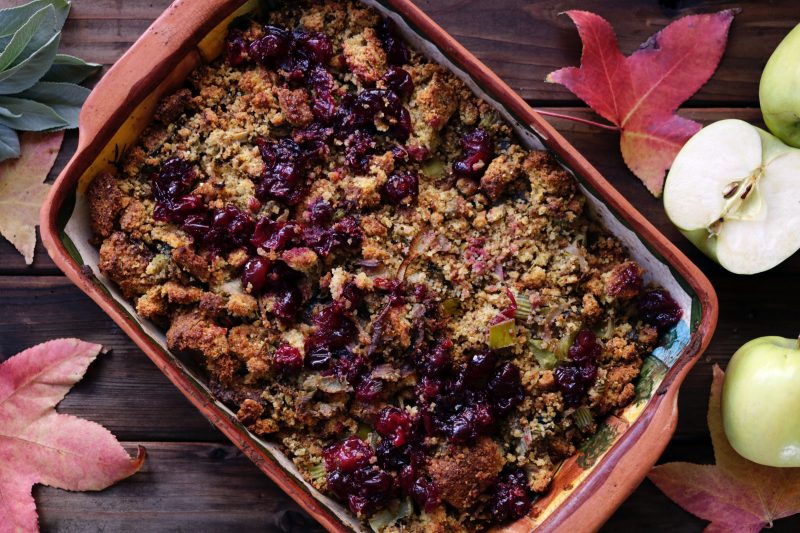
Foods for winter
Balancing Indulgence and Health
- Portion Control: Enjoy your favorite comfort foods in moderation. Instead of eating large servings, opt for smaller portions to satisfy your cravings without overindulging.
- Load Up on Veggies: Incorporate vegetables into your comfort dishes whenever possible. Adding veggies to stews, casseroles, and pasta dishes boosts their nutritional value and adds fiber, vitamins, and minerals.
- Plan Balanced Meals: Balance indulgent comfort foods with healthier options throughout the day. If you have a rich dinner planned, opt for a lighter, vegetable-packed lunch.
- Stay Hydrated: Drinking water throughout the day can help control your appetite and prevent overeating during meals.
- Homemade vs. Store-Bought: When possible, prepare comfort foods at home. You have more control over the ingredients and can make healthier substitutions.
- Healthy Swaps: Experiment with healthier ingredient substitutions, such as using Greek yogurt instead of sour cream or applesauce in baking recipes instead of sugar or oil.
Ways to make healthier versions of classic recipes
Here are some ways to make healthier versions of classic winter foods to stay warm:
- Use whole-wheat pasta or brown rice instead of white pasta or rice. This will add more fiber and nutrients to your meal.
- Use lean protein, such as chicken breast or fish, instead of red meat. This will help you reduce your saturated fat intake.
- Add more vegetables to your dishes. Vegetables are low in calories and fat and high in nutrients.
- Use healthier oils, such as olive oil or avocado oil, instead of butter or margarine. These oils are healthier for your heart.
- Season your food with herbs and spices instead of salt. Herbs and spices add flavor without adding calories or sodium.
- Bake or grill your food instead of frying it. This will help you reduce the amount of fat in your meal.
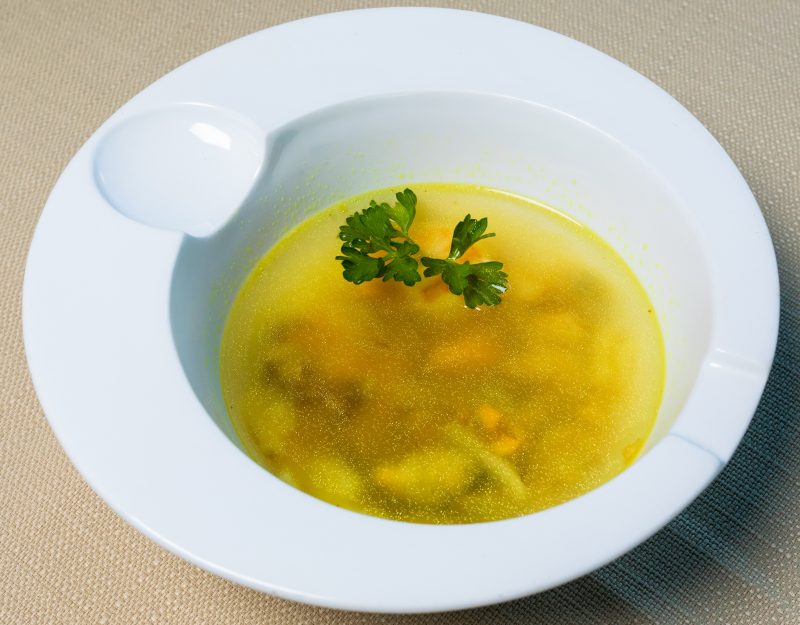
Soups for winter
Here are some specific examples of healthier versions of classic winter foods:
- Instead of a classic macaroni and cheese, try a version made with whole-wheat pasta, low-fat cheese, and vegetables.
- Instead of a beef stew, try a lentil stew or a vegetable stew.
- Instead of a chicken pot pie, try a chicken soup or a vegetable soup.
- Instead of a roasted chicken, try a grilled chicken or a baked chicken.
- Instead of a chocolate cake, try a fruit salad or a yogurt parfait.
With a few simple changes, you can enjoy all of your favorite winter foods without sacrificing your health.
Here are some additional tips for making healthier winter foods:
- Use frozen vegetables when they are in season. Frozen vegetables are just as nutritious as fresh vegetables, and they are often less expensive.
- Cook in large batches and freeze leftovers. This will save you time and money during the busy winter months.
- Try new recipes. There are many healthy winter recipes available online and in cookbooks. Get creative and experiment with different flavors and ingredients.
With a little planning and effort, you can enjoy healthy and delicious winter foods all season long.
Winter Foods for Outdoor Adventures
When embarking on winter excursions, it’s important to have nourishing meals that can provide you with the energy and warmth you need. Here are some ideas for easy-to-prepare winter meals for your outdoor adventures:
- Hot Soup in a Thermos:
- Prepare a hearty soup like chicken noodles, vegetables, or chili at home.
- Pour the hot soup into an insulated thermos to keep it warm throughout the day.
- Pack some crackers or crusty bread for added texture and calories.
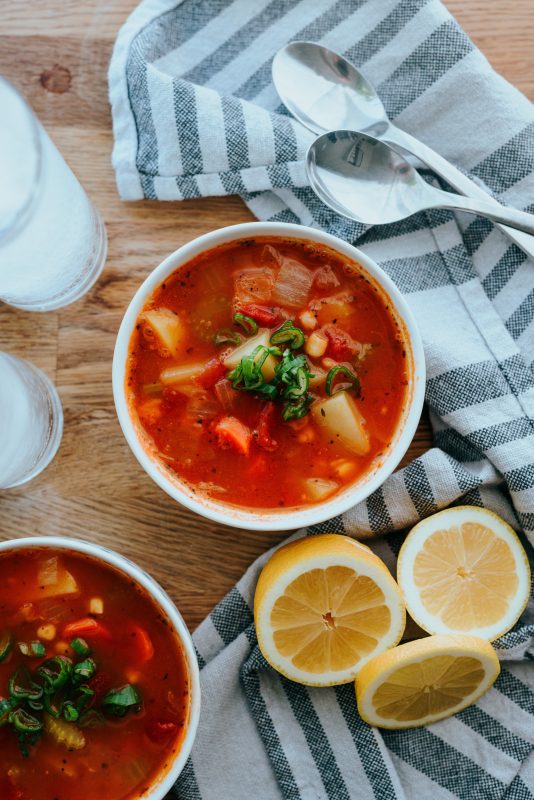
Winter Foods to pack
- Instant Oatmeal:
- Pack individual servings of instant oatmeal with toppings like dried fruits, nuts, and brown sugar.
- All you need is hot water, which can be heated using a portable camp stove or a thermos filled with boiling water.
- Wraps and Sandwiches:
- Make sandwiches or wraps with hearty ingredients like turkey, cheese, avocado, and lettuce.
- Use whole-grain bread or tortillas for added energy and fiber.
- Wrap them in foil to keep them warm and prevent them from getting soggy.
- Pasta Salad:
- Prepare a pasta salad with cold-resistant veggies like bell peppers, cherry tomatoes, and cucumber.
- Add protein sources like grilled chicken or tofu.
- Dress it with a hearty vinaigrette or creamy dressing for extra flavor and calories.
- Hot Drinks:
- Bring along hot beverages like cocoa, tea, or coffee in insulated travel mugs.
- These not only provide warmth but also a comforting boost of energy.
- Stuffed Potatoes:
- Wrap potatoes in aluminum foil and cook them directly over a campfire or portable stove.
- Top with ingredients like cheese, bacon bits, or sour cream for a filling meal
- Energy Bars and Nut Butter:
- High-protein energy bars and individual packets of nut butter can serve as quick and portable snacks.
- They’re easy to carry and provide a quick energy boost when needed.
- Rice and Bean Burritos:
- Pre-cook rice and beans and pack them separately in insulated containers.
- Warm them up and assemble burritos with your favorite toppings on the go.
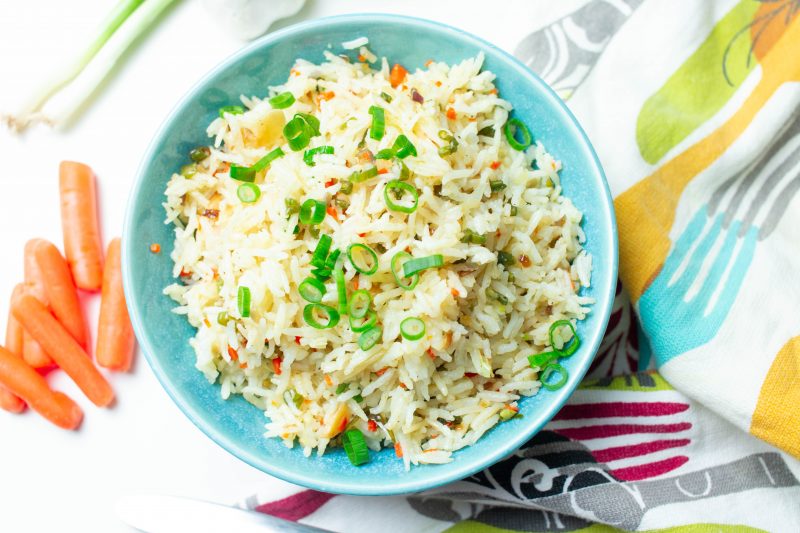
Rice as winter foods
FAQs
Here are some frequently asked questions (FAQs) related to winter foods.
Why is it important to eat seasonally in the winter?
Eating seasonally in the winter can provide you with fresh, nutrient-dense foods that are often more readily available and affordable. It can also help reduce the environmental impact of transporting out-of-season produce.
Are there any special dietary considerations for winter?
People often crave more calories in the winter to stay warm, but it’s important to maintain a balanced diet. If you have dietary restrictions or allergies, plan meals accordingly and consider fortified foods or supplements for nutrients like vitamin D, which may be lacking in the winter months.
How can I stay hydrated in the winter when I don’t feel like drinking cold water?
You can stay hydrated in the winter by drinking warm beverages like herbal tea, hot water with lemon, or broth-based soups. Additionally, you can opt for room-temperature water if cold water isn’t appealing.
What are some healthy snack options for winter?
Healthy winter snacks can include roasted nuts, Greek yogurt with honey and nuts, fruit slices with nut butter, and homemade trail mix with dried fruits and seeds.
How can I prevent overeating and weight gain during the winter months?
To prevent overeating, practice portion control, maintain an active lifestyle, and be mindful of your food choices. Focus on filling, nutrient-dense foods to help control cravings.

Foods in winter
Conclusion
In conclusion, winter is a season that presents unique dietary considerations, and choosing the right foods can help you stay healthy, warm, and energized during the colder months. Embrace seasonal fruits and vegetables like citrus, apples, pears, kale, and sweet potatoes to enjoy fresh, nutrient-dense options. Opt for nutrient-rich foods that provide essential vitamins and minerals, such as vitamin C, vitamin D, zinc, and omega-3 fatty acids, to support immune health and overall well-being.
Maintain a balanced diet by incorporating a variety of food groups, including vegetables, whole grains, lean proteins, and healthy fats. Avoid excessive consumption of sugary or processed foods. Stay hydrated by drinking warm beverages like herbal tea or broth-based soups, and consider room-temperature water if cold drinks are unappealing.
If you are looking for some winter clothes visit Kosha website.
Enjoy warm and comforting meals like hearty soups, stews, chili, roasted vegetables, casseroles, and oatmeal to stay cozy during winter. Overall, a well-balanced and mindful approach to winter eating can help you make the most of this season’s unique flavors while staying nourished and healthy.
This blog article is written by Kosha Team Member – Neeti Kapoor.



